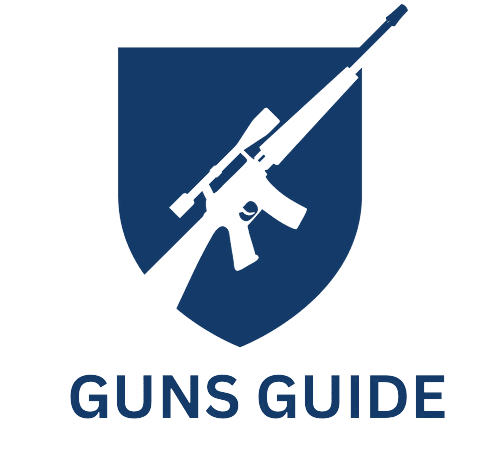The Remington 710 is a popular bolt-action rifle that was introduced to the market in 2001 and was manufactured until 2006. Despite its popularity among hunters and recreational shooters, it’s no secret that this rifle has faced its fair share of issues and criticism over the years. This blog post will delve into the various problems associated with the Remington 710, possible reasons for the problems, and potential solutions for them. Whether you own one yourself or are considering purchasing one, it is essential to be aware of these issues and how to address or avoid them.
The Basics of the Remington 710 Rifle
Before discussing the problems surrounding the Remington 710, let’s quickly examine its design and specifications. The Remington 710 is a budget-friendly bolt-action rifle available in several chamberings, including .30-06 Springfield, .270 Winchester, 7mm Remington Magnum, and .300 Winchester Magnum. Its characteristic features include a synthetic stock, a matte finish, and a unique barrel nut system. The rifle came equipped with a pre-mounted, bore-sighted 3-9x40mm scope, providing hunters with a ready-to-use package.
Common Issues
Barrel Nut System
One of the most frequently cited problems with the Remington 710 is the barrel nut system. The barrel nut system involves a thin metal sleeve that is threaded onto the barrel and holds the receiver, barrel, and bolt together. This design differs from the typical method of directly threading the barrel into the receiver.
The primary issue with the barrel nut system is that it can result in an inconsistent headspace. Headspace is the distance between the bolt face and the chamber, which plays a crucial role in ensuring proper chambering and extraction of the cartridge. Improper headspace can lead to case separations, dangerous pressure levels, or ammunition feeding issues. In the long run, this design choice can cause more wear and tear on the rifle, leading to potential safety concerns.
Quality Control Issues
Another common complaint about the Remington 710 concerns quality control issues, particularly in the manufacturing process. Some shooters have reported that they have received rifles with loose screws or improperly torqued components fresh from the factory. These quality control lapses can result in poor fit and finish, leading to a less satisfying shooting experience, increased wear over time, or even potential dangers while operating the rifle.
Scope Quality
While the included 3-9x40mm scope may seem like a valuable addition to the Remington 710 package, many users have reported that the scope is of subpar quality. The scope’s image quality and adjustments are often criticized, suggesting that the scope may not hold zero or be as accurate as expected. Those who use the rifle for hunting, where a quality scope can make the difference between a successful hunt and going home empty-handed, may find the included scope to be insufficient for their needs.
Difficulty in Finding Replacement Parts
Due to the Remington 710 being discontinued since 2006, it has become increasingly challenging to find replacement parts. While many internal components are interchangeable with the Remington 700 series, the 710’s unique barrel and receiver design make it difficult to find parts specifically tailored to the 710.
Solutions and Fixes
1. Replacing the Barrel Nut System
For those who are looking to solve the barrel nut issue and don’t mind investing time and resources, replacing the barrel with one designed for a traditional threaded receiver can help mitigate potential headspace issues. This process may require the help of a gunsmith, as it entails re-barreling the rifle and ensuring proper fitment and headspace.
2. Addressing Quality Control Issues
– If you experience any loose screws or components, the best course of action would be to disassemble the rifle and apply proper torque before using it. Additionally, applying thread-locking compound to screws and components can help prevent loosening.
– Regular maintenance and close examination of the rifle can help identify any issues that arise from regular wear over time, ensuring a safer shooting experience.
3. Upgrading Your Scope
Investing in a higher-quality scope can vastly improve the shooting experience and accuracy of the Remington 710. There are numerous aftermarket scope options on the market that cater to a variety of budgets and shooting requirements. Choose a reputable scope manufacturer and check user reviews before proceeding with a purchase. Keep in mind that, in some cases, you may need to acquire new scope rings or bases to accommodate your new scope.
4. Purchasing Replacement Parts
If you find yourself in need of replacement parts for your Remington 710, consider the following:
– Check online auction sites like eBay or GunBroker to find users looking to sell Remington 710-specific components.
– Get in touch with gunsmiths who specialize in Remington rifles; sometimes, they may have spare parts or be able to fabricate the necessary parts.
– Consider upgrading to the Remington 700, which provides a more widely-supported platform and better overall quality.
In conclusion, the Remington 710 does have its share of problems. However, if you are aware of these issues and are prepared to invest in potential fixes or proceed with caution, it can still provide a cost-effective and functional firearm suitable for the budget-conscious shooter.
Frequently Asked Questions
Is the Remington model 710 any good?
The Remington model 710 has a mixed reputation among gun enthusiasts, with some praising its affordability and ease of use, while others criticize its durability and accuracy issues.
What is the twist rate on a Remington 710?
The twist rate on a Remington 710 varies depending on the specific model and caliber. You can typically find this information in the owner’s manual or by contacting Remington customer service.
Where is Remington 710 made?
The Remington 710 was manufactured in Ilion, New York, at Remington’s main production facility until it was discontinued in 2006.
Has the Remington 700 been fixed?
Remington has made several changes to address safety concerns with the Remington 700 trigger mechanism, including the introduction of the X-Mark Pro trigger and offering a retrofit program for older models. However, some gun safety advocates still argue that the design is inherently flawed.
What are some common problems with the Remington 710?
Some common problems reported by Remington 710 owners include feeding issues, poor accuracy, and a cheaply made plastic stock that is prone to cracking.
How do I fix a jammed Remington 710 bolt?
If the bolt on your Remington 710 is jammed, you should first ensure that the rifle is unloaded and pointed in a safe direction. Then, try using a cleaning rod or other tool to push the bolt forward through the chamber, or carefully disassemble the gun to remove the obstruction causing the jam.
Can I use Remington 700 accessories on a 710?
Most Remington 700 accessories, such as scopes, mounts, and slings, can be used with a 710 rifle. However, it is always best to check with the manufacturer or an experienced gunsmith to ensure compatibility.
What is the difference between a Remington 710 and 770?
The Remington 710 and 770 are similar rifles, both designed as budget-friendly alternatives to the higher-end Remington 700 model. However, the 770 features some improvements over the 710, including a better trigger and an upgraded stock.
How do I properly clean my Remington 710?
To clean your Remington 710, you should first ensure that the gun is unloaded and disassembled according to the owner’s manual. Then, use a cleaning rod and solvent to clean the bore, and wipe down all exterior surfaces with a clean, dry cloth. Finally, lubricate the gun according to the manufacturer’s recommendations.
Can I still get parts for my Remington 710?
Remington discontinued the 710 in 2006, but replacement parts and accessories may still be available through gun stores and online retailers. Alternatively, you can contact Remington customer service for assistance in locating specific parts.

